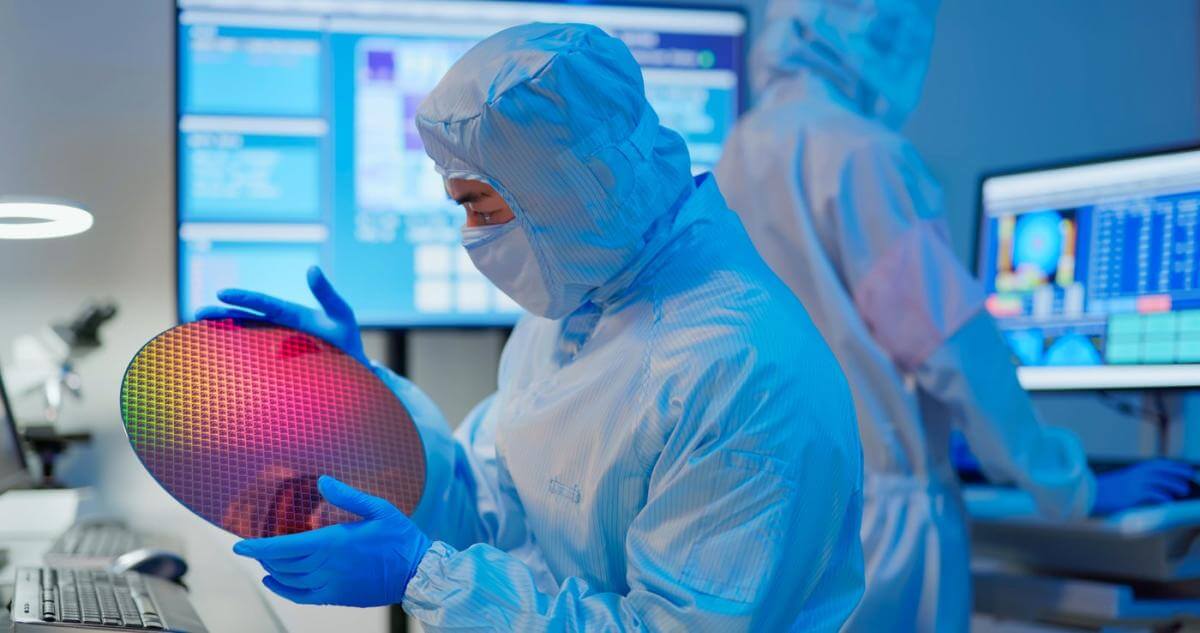
Chemical Mechanical Planarization (CMP) is a crucial process in semiconductor manufacturing, essential for creating a flat and even surface on semiconductor wafers. Understanding the CMP process and the role of temperature control can significantly enhance the quality and yield of semiconductor products.
Understanding the CMP Process
CMP involves the removal of excess material from the surface of a semiconductor wafer to achieve planarity. This intricate process ensures that subsequent lithography steps can accurately define the fine features of semiconductor devices. The CMP process comprises four main components:
-
- Polishing Pad: Made from diverse materials tailored for specific processes, the polishing pad is the primary contact surface that interacts with the wafer. The material of the polishing pad can vary depending on the specific requirements of the CMP process, such as hardness, texture, and durability. The pad’s properties significantly influence the efficiency and uniformity of material removal.
- Slurry: This contains abrasive particles and chemicals selected based on the desired material removal rate and surface finish. The composition of the slurry is crucial for achieving the targeted material removal. Different slurries are formulated for various applications, such as oxide, metal, or dielectric CMP. The abrasive particles, typically made of silica or alumina, mechanically remove material, while the chemical components facilitate the removal process and help prevent defects.
- Wafer Carrier: The wafer carrier holds the wafer in place during polishing, ensuring uniform contact with the polishing pad. This uniformity is essential for consistent material removal across the wafer surface. The wafer carrier typically includes a retaining ring to secure the wafer and distribute the downforce evenly. Advanced wafer carriers can adjust pressure and rotation independently to optimize the planarization process.
- Platen: The platen is the rotating disk on which the polishing pad is mounted. Its rotational speed and temperature are critical parameters influencing the CMP process. The platen’s rotation provides the necessary motion for material removal, while its temperature must be carefully controlled to maintain the desired pad properties and slurry performance.
The Role of Temperature Control in CMP
Temperature regulation is a critical aspect of the CMP process, influencing several key factors that determine the quality and efficiency of semiconductor wafer planarization. Deviations in temperature can have significant impacts on the consistency and outcome of the CMP process. Maintaining a stable temperature is essential for the following reasons:
-
- Consistent Material Removal: Temperature fluctuations can lead to uneven material removal rates, causing surface defects such as scratches, dishing, or erosion. These defects can affect the overall planarity and functionality of the semiconductor wafer.
- Slurry Performance: The temperature of the slurry affects its chemical activity and the efficiency of the abrasive particles. Higher temperatures can increase the reactivity of the slurry chemicals, potentially accelerating material removal but also increasing the risk of over-polishing or chemical damage to the wafer. Conversely, lower temperatures can reduce the reactivity and efficiency of the slurry, leading to slower removal rates and potential under-polishing.
- Pad Condition: The polishing pad’s condition is influenced by the operating temperature. Excessive heat can cause the pad to wear out more quickly, reducing its lifespan and performance. It can also lead to the softening of the pad material, resulting in decreased effectiveness and increased risk of defects. Conversely, too low a temperature can make the pad too rigid, reducing its ability to conform to the wafer surface and evenly distribute the slurry.
- Platen Temperature Control: The platen’s temperature must be carefully regulated to ensure that the polishing pad and slurry perform optimally. If the platen becomes too hot, it can transfer heat to the polishing pad and slurry, potentially causing over-polishing and defects. If it is too cold, it can reduce the effectiveness of the slurry and the pad, leading to under-polishing.
LAUDA’s Advanced Temperature Control Solutions
LAUDA’s Ultracool line of chillers is designed to meet the precise temperature control needs of CMP, with cooling capacities up to 265kW. These chillers are suitable for various CMP applications, including:
-
- Platen Cooling: Efficiently managing the heat generated by the platen to maintain optimal temperatures and uniform polishing conditions.
- Slurry Temperature Control: Regulating slurry temperature to enhance its performance and consistency.
- Carrier Heat Management: Controlling the wafer carrier temperature to prevent overheating and ensure uniform contact with the polishing pad.
Incorporating advanced temperature control solutions like LAUDA’s Ultracool chillers into the CMP process is essential for achieving the precision and quality required in semiconductor manufacturing. By maintaining stable temperatures across key components of the CMP process, semiconductor manufacturers can improve their process stability, product quality, and overall operational efficiency.
This post was authored by Tom Fiaoni, Semiconductor Industry Specialist at LAUDA-Brinkmann.
